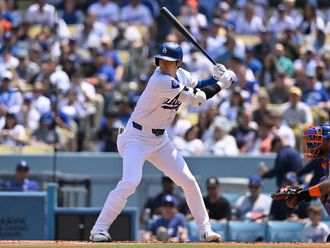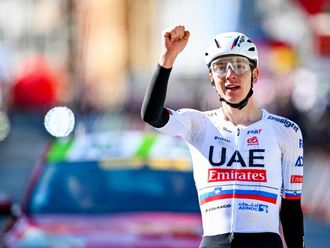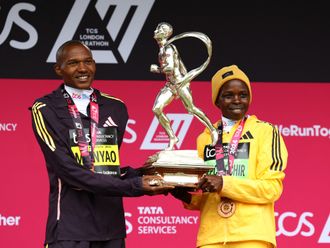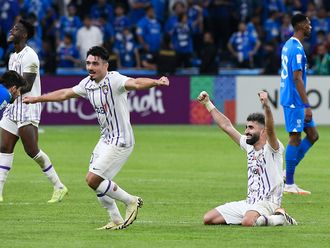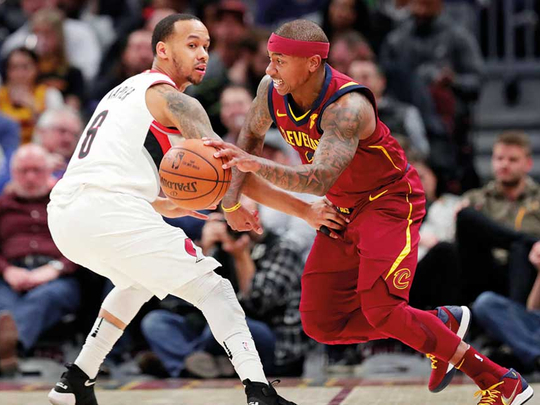
Cleveland: Isaiah Thomas is back. What does it mean for the Cleveland Cavaliers
The most important moment of Isaiah Thomas’ return to competitive basketball on Tuesday night wasn’t any of his six baskets. It wasn’t any of the pick-and-rolls he ran. It wasn’t even the technical he picked up for yapping at the referees when he didn’t receive a foul call he thought he deserved.
The most important moment of Tuesday night’s game between the Cleveland Cavaliers and Portland Trail Blazers came when Thomas tried to split Portland’s Damian Lillard and Al Farouq Aminu and crashed to the floor — only to immediately hop back up again.
Over the past several months, as Thomas has diligently rehabbed his injured hip and waited to make his Cleveland debut, no amount of controlled workouts before games or at the team’s practice facility was going to simulate how Thomas’ body would hold up under the rigours of NBA competition, when the opposition is going full speed with the intent to stop him.
So the fact Thomas showed no ill-effects of that spill — not to mention the one he took following an and-one layup a few minutes later — made his opening act as a member of the Cavaliers an unqualified success, with Cleveland’s 127-110 victory serving as icing on the cake.
Thomas’ final line — 16 points on 6-for-12 shooting overall and 2 for 7 from three-point range in 18 minutes — is irrelevant. So, too, is the fact Thomas won’t be playing in Boston on Wednesday night, as Cleveland make their first of two visits to Boston’s TD Garden this regular season. It’s a short-term disappointment from a narrative perspective, but unquestionably the right decision not to subject him to that kind of stress and intensity so soon after coming back.
But with a successful debut behind him — and with an expected return to the starting line-up coming Saturday in Orlando — the focus now shifts from the anticipation of what Thomas would look like when he finally returned to what Cleveland will look like now that he has.
The truth is, for as good as Thomas is as a player, the benefit he’ll provide to Cleveland is less than what he would bring to most teams. His biggest contribution — the inclusion of another 25-point scorer into Cleveland’s offensive attack — is a surplus on a team that even before he came back was already the third-best offence in the NBA, trailing only the Warriors and Rockets. And his biggest flaw — defence — will do nothing to help Cleveland’s biggest issue: a defence that was tied for 22nd in the NBA before allowing 110 points to Portland on Tuesday night.
That’s why Thomas’ impact in Cleveland will have to come in more subtle ways. His return means some of the responsibility of scoring and creating that’s been borne by James so far this season can be lessened — something the Cavaliers need to do to ensure James has as much energy as possible come late May and early June. At the very least, it should allow the Cavaliers to play James fewer minutes, though whether the world’s best player will allow that to happen remains to be seen.
Thomas’s return will also mean Cleveland shouldn’t have to play either Jose Calderon or Derrick Rose — which, in the aggregate, will be a significant positive even before the obvious benefits to having Thomas on the floor. Much has been made of Rose’s lengthy absence because of a sprained ankle, but the fact is his diminished shooting prowess runs counter to everything Cleveland has created around James since he returned in 2014, and he certainly isn’t bringing anything defensively to make up for that.
Ultimately, what Thomas does is increase Cleveland’s margin for error. Without him, their most likely outcome for this season was a fourth straight trip to the NBA Finals and a third loss in four seasons to the Warriors. With him, their most likely outcome remains the same — only now the gap between the Cavaliers and the rest of the East is bigger and the distance between Cleveland and Golden State shrinks only slightly. After all, Thomas isn’t going to help Cleveland slow down Golden State, and there isn’t a team in the league that can keep up with them offensively.
And a healthy Thomas also potentially gives Cleveland options this summer — when the Cavaliers will have some big decisions to make. With free agency looming for Thomas — a free agency that he’s been waiting for to be properly compensated for his jump from solid player to genuine NBA star — the next few months will be crucial for him to reestablish himself as a player worthy of a massive payday after all of the doubts about the state of his hip over the past few months.
Those months also will be crucial for Cleveland to evaluate Thomas. If James chooses to return to the Cavaliers in free agency this summer, Cleveland will likely have to pony up to keep Thomas no matter what, as it will be so far over the salary cap just by keeping James that it won’t have any other way to add a played of Thomas’ calibre.
And if James does decide to leave, then Cleveland could potentially decide to hang onto Thomas if he plays at an all-star level again over the second half of this season, pairing him with Kevin Love and whomever the Cavaliers take with the first-round pick headed their way from the Brooklyn Nets in the 2018 NBA draft to create the foundation of the post-James era. If Thomas can be the player he was before the hip injury, that is a foundation that should be good enough to keep Cleveland relevant — even if it isn’t enough for the Cavaliers to remain in championship contention.
Which is why Isaiah Thomas proving he still can take a hit was so important Tuesday. And in what is a pivotal six months for both Thomas and the Cavaliers, it was exactly the debut all involved hoped for.



